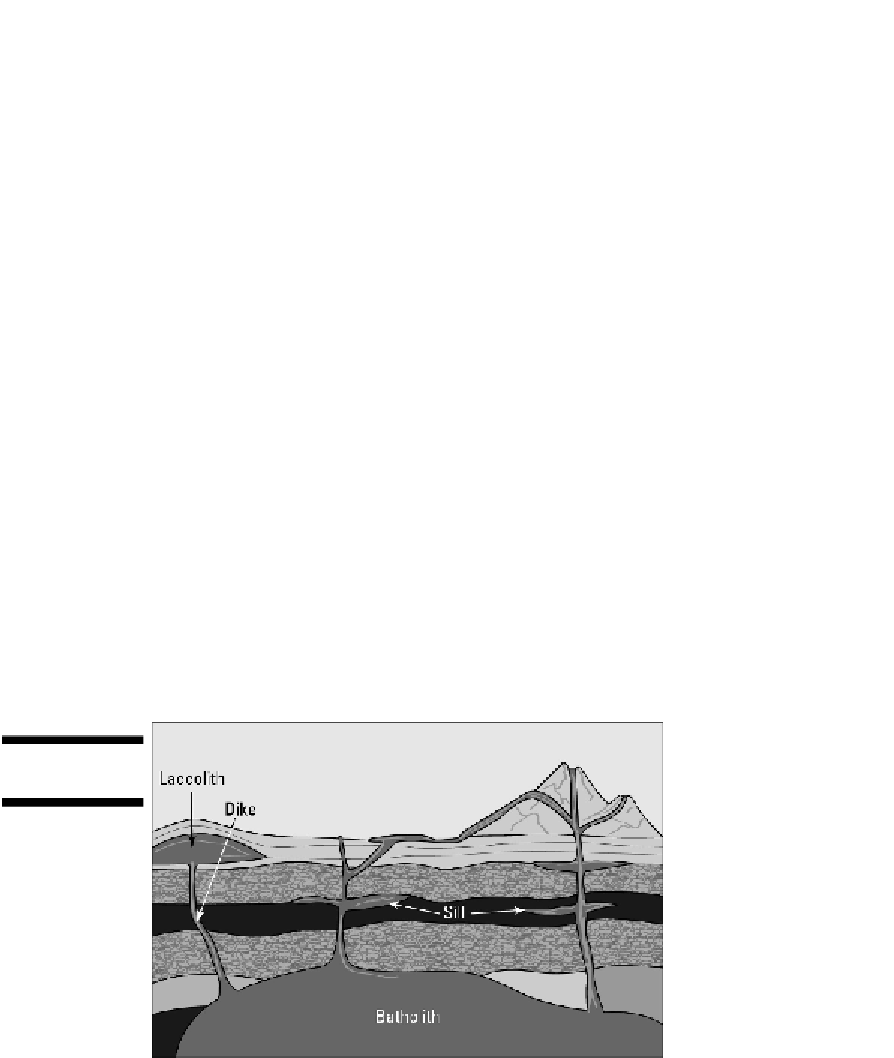Geology Reference
In-Depth Information
Cinder cones are the smallest eruptive volcanic features — usually less than 1 kilometer
(.6 miles) across. After one erupts, its pipe may close and never erupt again. Commonly,
you see cinder cones on the side of larger volcanoes, as
parasite cones
of a bigger vol-
cano, such as a shield volcano or stratovolcano (refer back to Figure 7-1). They also
commonly occur in groups, or
fields,
such as on the flanks of Mauna Kea (a shield vol-
cano) in Hawaii.
Seeing what lies beneath: Plutons
Volcanoes and volcanic structures are the surface features of erupted materials. But
magma doesn't always reach the surface before it transforms into a solid. When magma
solidifies below the surface of the earth, it creates features called
plutons.
The processes
that create plutons often occur alongside the processes of volcanism I describe in the
previous section. A single magma may produce the multiple volcanic and plutonic fea-
tures found in a region.
Plutons are solidified magma underground that form bodies of igneous (intrusive) rock.
The shape of a pluton is described as either
massive
(a somewhat rounded or full shape)
or
tabular.
Tabular plutons form when magma fills cracks in pre-existing rock and the
resulting rock bodies are flat or linear in shape.
If the pluton cuts through layers of rock (usually sedimentary rocks, which I describe in
the next section), it's called
discordant.
If the pluton fills cracks parallel to pre-existing
sedimentary layers, it's called
concordant.
Figure 7-5 illustrates the most common pluton types, which I describe here:
Figure 7-5:
Types
of plutons.

